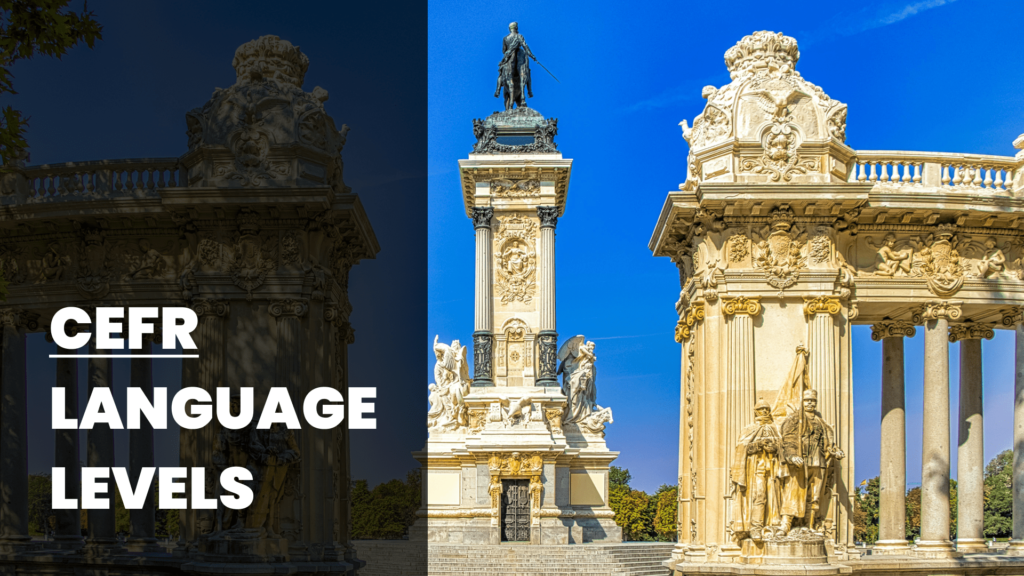
Want to learn Spanish? Try Mondly for FREE now!
Exploring a new language feels a lot like exploring a map — there’s always something new to discover. Whether you’re planning a trip or just expanding your Spanish skills, knowing some basic Spanish words at an A1 level is a great way to start. Let’s go over simple yet essential Spanish words for geography (la geografía) — perfect for learning Spanish for beginners.
When you know how to talk about geography in Spanish, you open the door to richer conversations. You can describe the places you’ve been, ask for directions, or simply chat about your favorite landscapes. These words form the foundation for discussing the world around you — and that’s a big step forward in your Spanish journey.
As a Spanish learner myself, I’ve learned the hard way that aiming for fluency right away isn’t the best goal when learning a new language. So, if you’re just starting out with Spanish, I highly recommend familiarizing yourself with the CEFR (Common European Framework of Reference). It will guide you on what to focus on at each stage of your learning journey. Check out this article to get a clearer idea of what you should learn as a beginner and what’s expected of you along the way.
Basic Spanish Words for Geography
Here’s a list of basic Spanish words for different landforms and places:
- La montaña (lah mon-TAH-nyah) — Mountain
- El río (el REE-oh) — River
- El mar (el mahr) — Sea
- La playa (lah PLAH-yah) — Beach
- El bosque (el BOHS-keh) — Forest
- El desierto (el deh-SYEHR-toh) — Desert
- La ciudad (lah thoo-DAHD) — City
- El pueblo (el PWEH-bloh) — Town
- La isla (lah EES-lah) — Island
- El lago (el LAH-goh) — Lake
- El volcán (el vol-KAHN) — Volcano
- La colina (lah koh-LEE-nah) — Hill
- La bahía (lah bah-EE-ah) — Bay
These words are simple but powerful — they help you describe the world around you and connect with people when talking about places. Imagine you’re visiting a new town (pueblo) by the beach (playa) or hiking a tall mountain (montaña) — knowing these words adds a whole new layer to your experience.
Simple Sentences Using Geography Words
Let’s put these words into action with some beginner-friendly sentences:
- La montaña es alta. — The mountain is tall.
- El río está cerca del pueblo. — The river is near the town.
- La playa tiene arena blanca. — The beach has white sand.
- El bosque es muy verde. — The forest is very green.
- Hay una isla pequeña en el lago. — There is a small island in the lake.
- El volcán está activo. — The volcano is active.
- La colina no es muy alta. — The hill is not very tall.
- La bahía es hermosa al atardecer. — The bay is beautiful at sunset.
These examples keep things simple, but they show how you can start building sentences — even as a beginner. The more you practice, the more natural it will feel.
A Fun Way to Practice
Want a fun way to remember these words? Try looking at a map or a photo of a landscape and saying what you see in Spanish. Point to a mountain and say la montaña, or spot a river and say el río. It’s a simple habit, but it really helps these words stick.
Another fun idea is to create your own imaginary map. Draw an island (isla), add a forest (bosque), and place a town (pueblo) by a lake (lago). Label everything in Spanish — it’s a creative way to memorize vocabulary while having a bit of fun.
Try Mondly for Free Now!
Want to improve your Spanish as a beginner? I personally recommend Mondly, as it helped me tremendously when I was just starting out. With its interactive lessons and real-world conversations, it’s an excellent tool for expanding your vocabulary and building confidence in Spanish. Try Mondly now for free!
Final Thoughts: Learning Spanish for Beginners
Geography words are a great starting point because they’re all around us — whether you’re in a city (ciudad), near a lake (lago), or dreaming about a beach (playa). Mastering these basic Spanish words at an A1 level gives you the confidence to talk about the world around you. It’s a simple yet effective way to keep learning Spanish for beginners.
So, the next time you’re walking by a river or looking at a map, try thinking about what you see — in Spanish. Little by little, these words will become second nature.
Keep going — you’re building your Spanish one word at a time!


